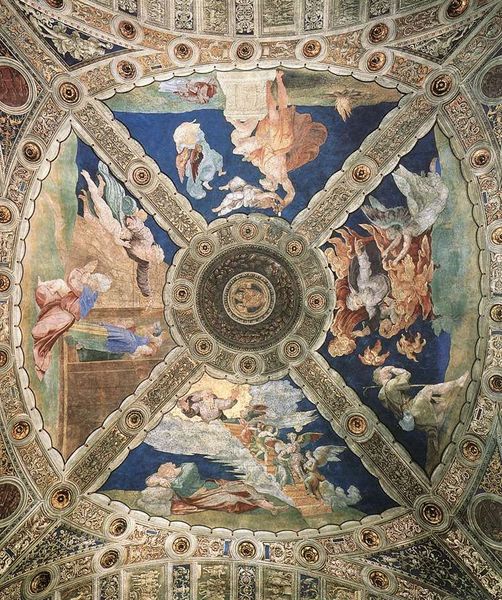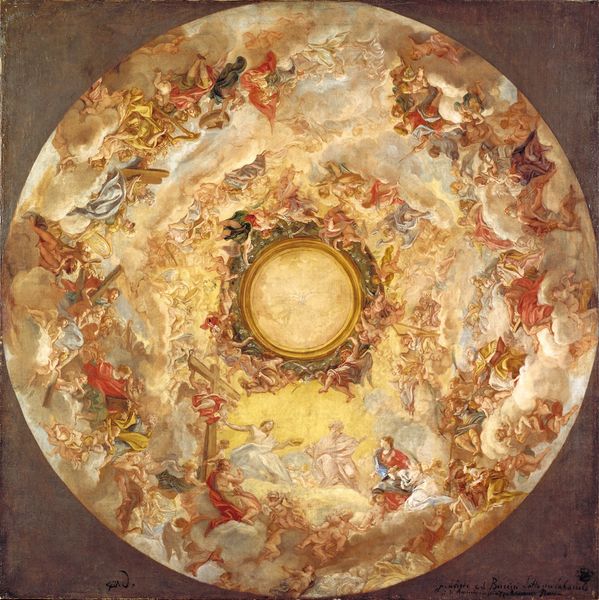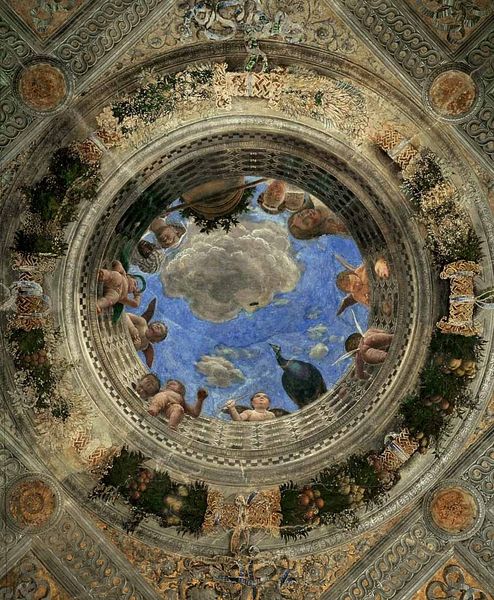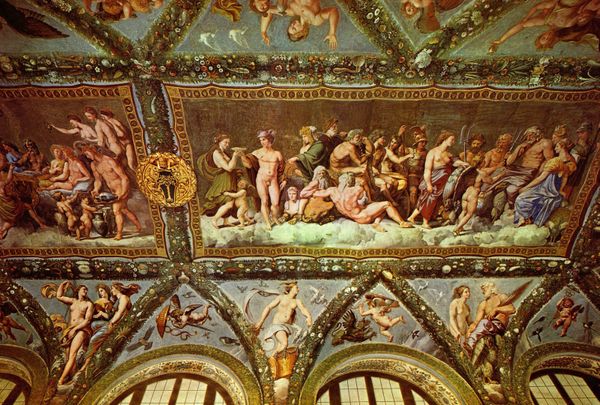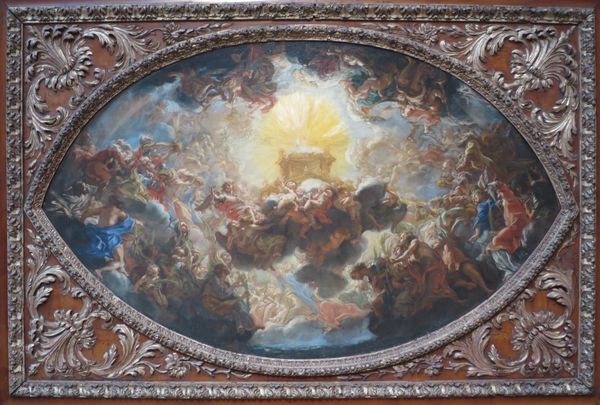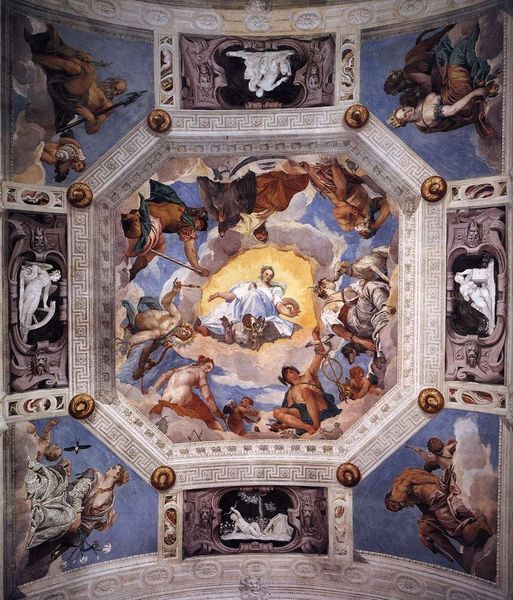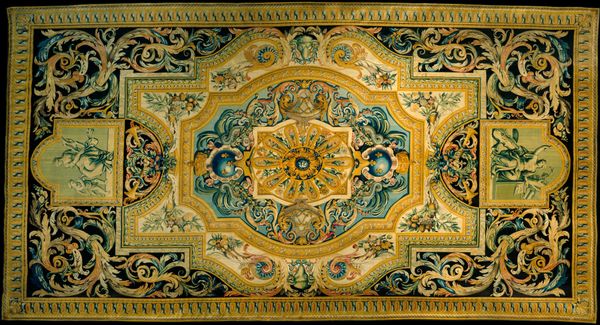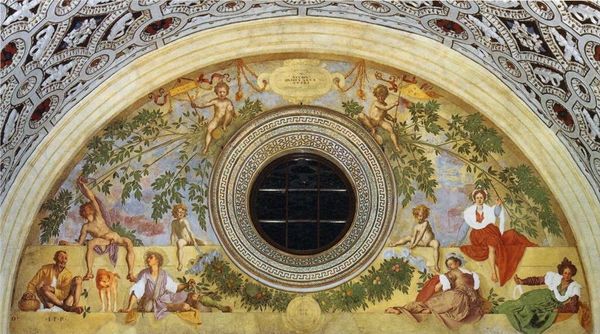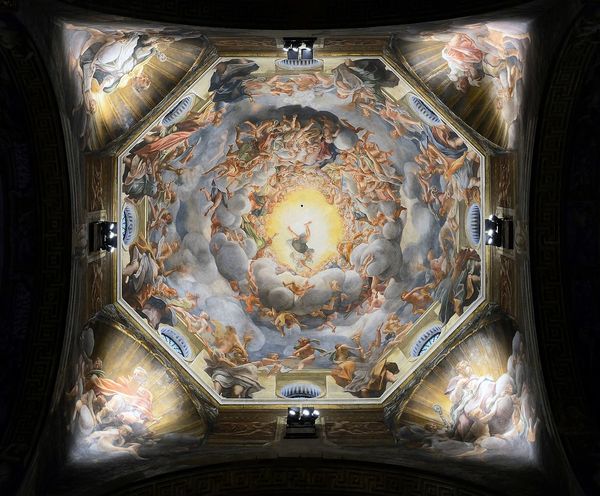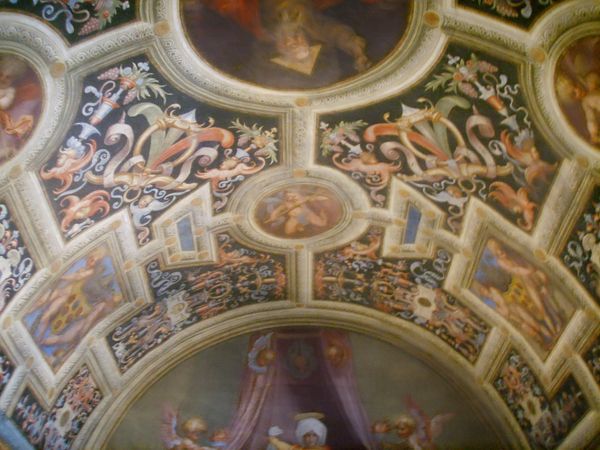
painting, fresco, mural, architecture
#
neoclacissism
#
allegory
#
painting
#
sculpture
#
historic architecture
#
fresco
#
traditional architecture
#
history-painting
#
mural
#
architecture
Copyright: Public domain
Curator: Look up. What do you see? “The Apotheosis of Saint Genevieve,” painted in 1824 by Antoine-Jean Gros. It’s a mural. Editor: Wow. It feels celestial. Figures swirl around this central, luminous space like…like planets around a sun. Curator: Indeed. Gros, steeped in the tradition of neoclassical painting, offers us not just a saint, but an allegory. Commissioned to adorn the cupola of the Pantheon in Paris, initially the church of Saint Genevieve, this piece underwent its own secular apotheosis. Editor: It’s hard to ignore the political undertones. Genevieve, surrounded by French kings and historical figures… Is it pure reverence, or something more about power and legacy? Curator: Gros was navigating a complex period. Under the restored Bourbon monarchy, the Pantheon was reclaimed as a church, hence the commission. The figures around Genevieve – Clovis, Charlemagne, Louis IX – they all served to reinforce the Bourbon lineage and divine right to rule. But Gros manages a certain…ambivalence, don’t you think? Editor: Definitely. The painting feels both grand and propagandistic. Genevieve almost seems to endorse the regime, which raises questions for me. What’s the price of artistic patronage when it’s so deeply entwined with state power? How can you separate art from politics, and should you? Curator: Precisely the kind of questions we should be asking. And it makes one wonder what ordinary Parisians, below this spectacle, felt as they looked up at this statement. Editor: And the figures themselves; who gets remembered? Who gets represented? Art like this isn't just beautiful, it's a document, open to constant reinterpretation. It reveals a struggle between narratives and power. It’s a mirror of history that still provokes these reflections in the present day. Curator: It certainly is. Consider this "Apotheosis," then, a reminder that even in the heavens, history – and politics – cast long shadows.
Comments
No comments
Be the first to comment and join the conversation on the ultimate creative platform.
